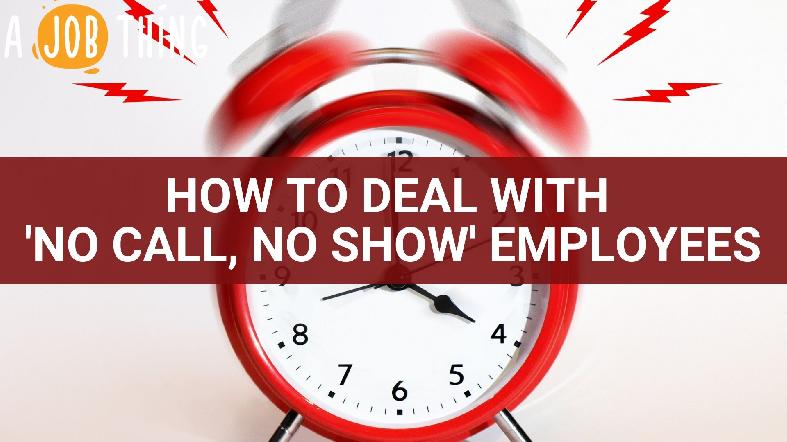
No Call, No Show: How to Deal With Employee Absenteeism
Are You Hiring?
Find candidates in 72 Hours with 5+ million talents in Maukerja Malaysia & Ricebowl using Instant Job Ads.
HIRE NOW
Have you ever experienced an incident where an employee did not show up for work? You checked the attendance record and there’s no leave application from them. You waited for a call, but your phone’s not ringing. If they’re involved in an accident, then it is understandable.
But unfortunately, it might just be another case of a no-show. If you find yourself dealing with an employee who does not care if they show up to work or not, you will need an effective no-call, no-show policy:
1. Create a No-Call, No-Show Policy in Place
Introduce a policy within the employee handbook that outlines the guidelines for missing work. It should address all absence-related questions like:
-
How to request a leave
-
How to use personal days
-
How to handle last-minute sick days
-
If documentation (signed notes) is required
-
How to communicate with coworkers to fill your shift
-
Consequences for no-call, no-shows
Once your employees are aware of the policy, you can hold them accountable for no-shows. But ensure that your police explains what no-show means and the consequences of absenteeism.

Employees who are always absent without good reason is a big problem.
2. Enforce the Policy
Once the policy is created, it is upon you to enforce it with consistency and treat employees equally. Consider these tips when enforcing policy rules:
-
Pull the employee aside for a one-on-one discussion. Address the problem. Explain how being late or not showing up for work affects the other employees and production.
-
Discuss the importance of each employee, full-time or part-time, on meeting the needs of the customer.
-
Indicate that the employer has the right to terminate the employee as a result of the missing time.
-
Ask the employee to explain their absence with a show-cause letter. It may be a time scheduling concern or it may be due to a lack of motivation. Ask the employee what their long-term goals within the company are and create an action plan for reducing lost time at work.
-
Establish specific consequences tied to missing time. Record every instance of the problem. Follow through with the required action you’ve outlined with the employee.
No matter your goals are, remember to enforce them equally on all employees and management. This will send a message that you will not tolerate no-call absences.
3. Improve Your Scheduling Practices
With scheduling apps, it’s now easier for employees to request leave. More importantly, it gives them the power to fill their own shifts.
Workplace flexibility is a huge bonus for employees, so make it as easy as possible for them to take ownership and find a replacement if need be.
You can also execute an on-call list, which includes a list of workers who have signed up to pick up extra hours.
Note: Make sure to include terms & conditions in your no-call, no-show policy around your software. For example, if employees seek their own replacements, you can ask that these requests be sent to managers for approval.
4. Teach New Employees The Rules
Let your new employees know about work attendance and absences policy. This should be a part of the onboarding process. You should also:
-
Provide workers with information about their choices for calling in sick or for days off.
-
Show them how important it is for each scheduled employee to be at work on time to serve customers or maintain productivity.
-
Discuss the steps for replacing an employee who may be ill.
When you provide this information, the new employees will not only know the rules but also understand the reasoning behind them.

Can an employer reject a sick leave?
5. Communicate with Your Employees
The last consideration for employers is to understand why absenteeism is happening. Talk to your employees, find out why they are always absent and you will find out a way to prevent these absences from happening again.
Some common reasons for no-shows could be:
-
Bad communication about availability
-
Lack of understanding of the rules
-
Inconsistent enforcement of the rules
-
Problems with scheduling
-
At-home problems
-
Management and employee-relation issues
-
Company not using scheduling software/app
Why You Should Implement a No-Call, No-Show Policy
Creating and implementing an effective strategy for absences will take time, but it will be worth it. Here are a few benefits you will likely see with less no-call, no-shows:
-
Increased productivity and morale for co-workers
-
Less wasted money on overtime & salaried workers who are getting paid for not being there
-
Improved communication between managers and team member.
Remember to ensure that your policy abides by the Employment Act 1955 and Industrial Relations Act 1967.
Obviously, employees get sick, have emergencies, or need days off from time to time. That’s expected. What isn’t acceptable is an employee no-show.
Source: When I Work
Arm your organisation with the best employees. How? By hiring with us. Register at AJobThing.com to schedule your free consultation.

